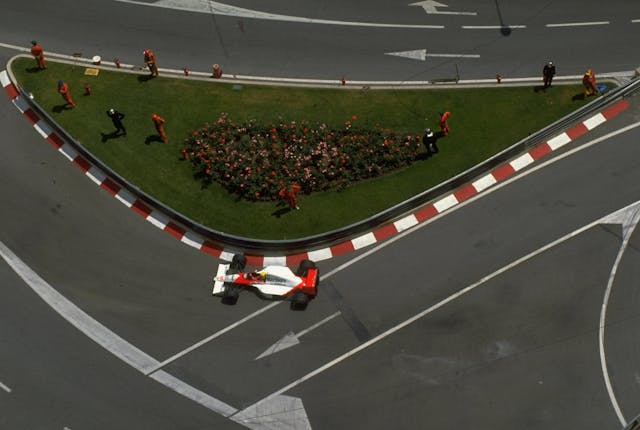Racing 101 #6: Why racers are superhuman scientists
Ross Bentley is a professional driving coach, sports car racer, and author of the bestselling Speed Secrets book series. He will join us each Monday to explain and dissect aspects of high-performance driving. Sharpen those pencils, take a seat, and speak up in the comments below. Class is in session.
Race car drivers have been called many things, from daredevils to names we dare not print in these refined digital web pages. Let me add a few more (family-friendly) descriptors: scientists, timekeepers, mathematicians, database managers, statisticians, and problem-solvers. In the span of one lap, racers perform thousands of calculations, at speed, while facing the consequences of even the slightest miscalculation.
The best drivers look at what’s ahead of them and calculate the best way to get from where they are to the end of a track’s section in the least amount of time. They use geometry to determine the perfect line through a corner or series of corners. Driving the ideal line requires thinking beyond the geometry of curves, as tracks are not two-dimensional with consistent surfaces. Elevation changes, banking, and different grip levels of various surface conditions turn these calculations into, at the very least, a 3D matrix.
Elite drivers also have an inner clock that can discern differences in time within fractions of a second. They can hustle a car through a nine-second section of track, and at a gut level compare what they just did with the previous lap they completed two minutes ago, knowing that one was seven tenths of a second faster. Then, they store that information in their mental database so they can pull it out again on the next lap or, perhaps, even a year later. Fun fact: The tales of superstars’ memory storage are legendary. Ayrton Senna could recall the number on his tachometer at many points on a track, within 10 rpms.

The scientific method is the process of identifying a problem, proposing a theory, and then experimenting with an open mind to see if the theory is correct. How is that any different from a driver arriving at an unfamiliar race track?
The new track is the problem. Proposing an idea of how to get around it in the least amount of time: That’s the theorem. Next, you experiment with hundreds, if not thousands, of variations to see which is correct.

Even more fascinating, two drivers can run their experiments, and arrive at two different solutions to the problem. This is just like arithmetic. Watch the best drivers closely and you’ll notice subtle differences in how they get around the track.
Even when Lewis Hamilton and George Russell turn lap times within a few thousandths of a second of each other in largely identical F1 cars, they’re using different algorithms. Consider just how many discrete techniques and skills each driver uses over the course of a three-mile circuit. We can lump all of these into the broad categories of braking, cornering, and acceleration, but each one can be broken down into dozens of variations. And then there are category combos such as trail braking. When you add them up, you’re looking at hundreds of differences, in just one corner. And yet, the cumulative result could be the blink of an eye.

Now, throw other cars into the mix, and consider just how many variations there are in the positioning of just two competitors going into one corner. This adds to the infinite number of scenarios. Overwhelming, right? So, how do the best drivers consistently make the right decisions?
Pattern matching.
While no two patterns in an on-track scenario will be exactly the same, there will be similarities.
When you’re driving on the street, approaching an intersection, and you “just knew that red car was going to pull out,” that’s pattern matching. You’re applying your past experience at an intersection to a new scene. Most new teen drivers arenʻt very good at this, because they havenʻt seen as many scenarios play out. Now, two drivers who have both driven for twenty years are not necessarily equally good at pattern matching. Some drivers are either more naturally gifted at this all-important skill, or they’ve developed the ability through practice.

The best racers are better at playing the odds than their competitors, too. They are excellent statisticians and know when to go for it, and when to exercise restraint. We think of them as being smart racers who make better decisions, and that’s accurate … to a point. They use this knowledge to gamble. Like gamblers, racers complete statistical analysis, playing probabilities. Quickly. There are very few people in the world who process as much data in their heads at such a high speed.
Still, even the best gamblers go through losing streaks.
To be able to peer inside the mind of the world’s best racers and observe this multi-level neuroprocessing occur at speed would be beyond fascinating. It would be literally mind-boggling, because the best drivers are more than just drivers.
***
Check out the Hagerty Media homepage so you don’t miss a single story, or better yet, bookmark it. To get our best stories delivered right to your inbox, subscribe to our newsletters.


